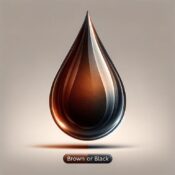
What Color Should My Period Be? Understanding the Spectrum of Menstrual Blood Colors
Introduction: Menstrual Blood Colors
Menstrual blood colors can vary significantly and are often a strong indicator of your overall reproductive health. Many women wonder about the range of normal when it comes to the color of their menstrual blood and what each hue might signify. In this blog post, we will explore the different colors of menstrual blood, what they generally indicate about your health, and when it might be time to consult a healthcare professional.
The Spectrum of Menstrual Blood Colors
Menstrual blood colors can display a spectrum from light pink to dark brown, each signifying different aspects of your health. Understanding these colors can provide insights into your menstrual health and help you recognize when something might be amiss.
-
Bright Red

Bright red: menstrual blood colors
Significance: Bright red blood is typical at the start of your period and often indicates that the blood is fresh and flowing quickly. This color is most common during the days of heaviest flow.
Health Implications: Generally considered normal, especially if it occurs in the middle of your cycle.
-
Dark Red or Burgundy

Burgundy: menstrual blood colors
Significance: Blood that appears darker, including deep red or burgundy, can be a sign that the blood is flowing more slowly and has had time to oxidize.
Health Implications: Dark red blood is typical at the beginning or end of menstruation. However, if you notice large clots larger than a quarter, it may be a good idea to speak with a healthcare provider.
-
Brown or Black

Brown: Menstrual blood colors.
Significance: Brown or black menstrual blood is usually older blood that wasn’t expelled from the uterus at the onset of your last period. It often appears at the end of your period.
Health Implications: Generally normal and no cause for concern unless accompanied by other symptoms like a bad odor or itching, which could indicate an infection.
-
Pink

Pink: Menstrual blood colors.
Significance: Pink menstrual blood is usually mixed with cervical fluid and can appear lighter in color. It’s often seen in people with lower estrogen levels.
Health Implications: While it can be normal, particularly if you are using hormonal birth control, consistently light periods should be discussed with your doctor to rule out any underlying conditions.
-
Orange

Orange: Menstrual blood colors.
Significance: Orange blood can indicate that the blood has mixed with cervical fluids but is also a sign that it hasn’t been exposed to oxygen for long.
Health Implications: While this can be normal, if the orange blood is accompanied by an unusual odor, it could indicate an infection and should be checked by a medical professional.
When to See a Doctor
While variations in menstrual blood colors are typically normal, there are certain signs that should prompt a visit to the doctor:
- Heavy Bleeding: If you are soaking through pads or tampons every hour for several hours, it’s essential to seek medical advice.
- Prolonged Periods: Menstruation that lasts more than 7 days.
- Unusual Symptoms: Severe pain, a significant increase in blood clot size, or symptoms of infection such as a foul odor or fever.
Conclusion
Menstrual blood colors varies widely and is influenced by many factors, including the speed at which blood exits the body and hormonal changes. Most variations are perfectly normal, but being aware of what is typical for you during your menstrual cycle can help you identify when something may be off. If you experience any unusual changes or symptoms, consulting with a healthcare provider is always the best course of action.
For more information on menstrual health, visit Mayo Clinic and Cleveland Clinic.
For internal resources, check out our other articles on menstrual health and related topics:
All Categories
Recent Posts
When Your Period Hits Hard: Menstrual Cramps Self-Care
True Stories of Period Poverty From Africa
Tags
Give them a helping hand
Every donation fuels our mission to combat period poverty. Your generosity brings us closer to menstrual equity.
+234-909-482-1642
inquiries@blossomflow.org




